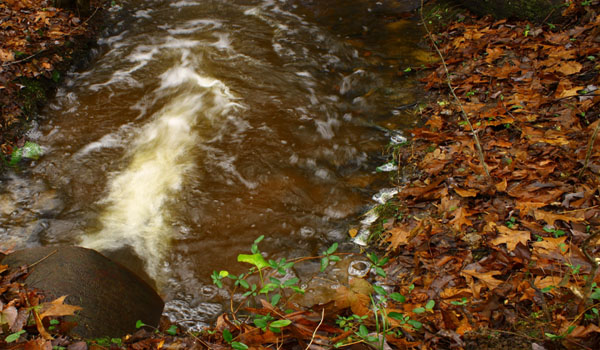Release of the Energy-Positive Water Resource Recovery Workshop Report
By Adriane Koenig
I’m excited to announce the release of a new joint report from EPA, DOE and NSF that articulates a bold vision for water treatment. Energy-Positive Water Resource Recovery Workshop Report outlines a range of research and actions to transform today’s treatment plants into water resource recovery facilities (WRRFs) that generate clean drinking water, biofuels, chemicals, and other water grades for specific uses, like agriculture. The report summarizes discussions and ideas presented at the Energy-Positive Water Resource Recovery Workshop held last April in Arlington, Virginia.
The meeting was convened as many wastewater treatment facilities, pipes, and related infrastructure in cities around the country approach the end of their expected service life. EPA estimates that it will require an investment of about $600 billion over the next 20 years to continue reliably transporting and treating wastewater and delivering clean drinking water. Given the state of the country’s water infrastructure, this is a prime opportunity to encourage an industry shift from wastewater treatment to water resource recovery. By applying new research and technology, this shift offers the potential to reduce the financial burdens on municipalities, decrease stress on energy systems, cut air and water pollution, improve system resiliency to climate impacts, and support local economic activity.
Experts from industry, academia, national laboratories, and government who participated in the workshop determined that WRRFs should perform four major types of functions:
- Efficiently recover the resources in wastewater
- Integrate production with other utilities
- Engage and inform stakeholders
- Run “smart systems”
The group also discussed challenges, including regulatory, technical, social, and financial barriers, all of which must be overcome to enable wide-scale evolution toward energy-positive WRRFs. Finally, participants identified research opportunities that could produce or significantly advance the needed technology.
This report is intended to stimulate further dialogue and accelerate the wide-scale transition of advanced WRRFs. The agencies, in cooperation with the Water Environment Research Foundation, are already addressing one frequent suggestion at the workshop by identifying facilities to serve as potential test beds for new technologies. I encourage you to visit the DOE website to view workshop materials and presentations as well as the full-length report.
Water Headlines
A new report outlines a range of research and actions needed to transform today’s water treatment plants into water resource recovery facilities that generate clean drinking water, biofuels, chemicals, and other water grades for specific uses, like agriculture. Energy-Positive Water Resource Recovery Workshop Report summarizes discussions and ideas presented at workshop held jointly last April by the U.S. Department of Energy (DOE), the U.S. Environmental Protection Agency (EPA), and the National Science Foundation (NSF).
With the nation’s aging water infrastructure, a unique window of opportunity exists to apply new knowledge and technology to create an industry shift from wastewater treatment to water resource recovery. Such a shift offers the potential to reduce the financial burdens on municipalities, decrease stress on energy systems, cut air and water pollution, improve system resiliency to climate impacts, and support local economic activity.
About the author: Adriane Koenig is an ORISE Research Participant serving in EPA’s Office of Water, where she promotes new technologies and innovative practices that advance sustainability in the water sector. She has a M.S. in Environmental Sciences and Policy from Johns Hopkins University.






 By Nancy Stoner
By Nancy Stoner Every year, flooding causes about $1.9 billion in property damage. More than 117 million Americans get some or all of their drinking water from waters that are not clearly protected right now. Every dollar spent on source water protection saves about $27 in water treatment costs. Clean water is an essential priority for hunters and fishers: About 40 million anglers spend about $45 billion a year, and about 2.3 million people spend $1.3 billion per year hunting migratory birds.
Every year, flooding causes about $1.9 billion in property damage. More than 117 million Americans get some or all of their drinking water from waters that are not clearly protected right now. Every dollar spent on source water protection saves about $27 in water treatment costs. Clean water is an essential priority for hunters and fishers: About 40 million anglers spend about $45 billion a year, and about 2.3 million people spend $1.3 billion per year hunting migratory birds.